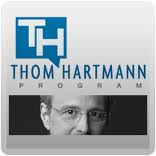 Tuesday night, I appeared on the Last Word with Lawrence O’Donnell to talk about Elizabeth Warren, the rise of progressives within the Democratic Party, and what this means for Bernie Sanders’ presidential campaign.
Tuesday night, I appeared on the Last Word with Lawrence O’Donnell to talk about Elizabeth Warren, the rise of progressives within the Democratic Party, and what this means for Bernie Sanders’ presidential campaign.
At one point in our discussion, the conversation turned to whether Bernie represents the closest thing to an Elizabeth Warren candidacy.
I said he does, but I also pointed out that he has the potential to be so much more than just a fill-in the blank progressive candidate.
That’s right: Bernie Sanders could be the next FDR. Let me explain.
When FDR took over the White House in 1933, America was in dire straits. Two straight decades of Republican rule culminating in the Great Depression had decimated what remained of the middle-class.
The superrich dominated the political system, Wall Street was a giant deregulated casino, workers had no union rights, and unemployment was rampant. And to make matters worse, many of the protections that we take for granted today, like, for example, Social Security, didn’t yet exist.
So FDR went ahead and oversaw what remains, with the probable exception of the Civil War, the most radical transformation of American democracy in our history: the New Deal.
He signed the Wagner Act, giving workers the right to collectively bargain with their bosses.
He created the Works Progress Administration, or WPA, and the Civilian Conservation Corps, or CCC, which provided jobs for millions of unemployed Americans and turned the government into the employer of last resort.
He created the Securities and Exchange Commission and signed the Glass-Steagall Act, which clamped down on Wall Street gambling and made the banking industry boring, safe, and sustainable.
He also signed the Social Security Act which created the backbone of the modern day welfare state and, for the first time, made it possible for all Americans to retire with a pension.
But the New Deal was bigger than just a collection of acts and agencies. What made it so important in the long run was that it created the preconditions for an American middle-class.
You, middle-classes are not “natural” in a deregulated capitalist economy. They have to be created, created with regulations, unions, and smart trade policy.
In its natural state, capitalism is a lot like feudalism. There is a small sliver of superrich who rule over everyone else, followed by a slightly larger class of middle-managers and professionals. The vast majority of people, though, fall into the category of working poor, and they’re basically serfs who have no power whatsoever.
This is what American society looked like before FDR became president. But after FDR’s time in office, American society was totally different.
Republicans and Democrats agreed to follow the basic policies set forth in the New Deal, and even expanded on them, as the Republican Party bragged about doing in its 1956 platform. They also supported sensible trade policies that prevented jobs from being shipped overseas in the name of corporate so-called “free trade.”
For decades this “New Deal consensus,” as historians call it, reigned supreme. And not coincidentally, so too did the middle class. From the end of World War II until the 1980s, American society was remarkably equal.
And then Reagan became president, and he and his Republican allies began undoing the New Deal piece by piece.
They gutted union rights, slashed the social safety net, and deregulated big business. Bill Clinton got in on the act too when he repealed the Glass-Steagall Act and allowed Wall Street to mix with commercial banking, a decision that led directly to the crash of 2008.
As a result, America has been going backwards ever since 1981. Our country now looks more like it did in 1933 than it did in 1973.
Yes, we have programs like Medicaid, Medicare, and Social Security that we didn’t have back then, but thanks to 30-plus years of Reaganomics, wealth inequality is once again soaring to record levels, union membership is the lowest it’s been in decades, and the superrich are sucking up all the income gains made since the crash.
Oh, and thanks to Citizens United, the Economic Royalists can buy any politician they want.
A lot of people understand what’s stake, but the man best equipped to handle this situation is Bernie Sanders. If elected president Bernie would do what FDR did in 1933 -- restore union rights, regulate Wall Street, and expand the social safety net. And with a Democratic congress behind him, he would probably go even farther.
How do I know this? Because I know Bernie, and he’s spent his entire career fighting for the core principle behind the New Deal: creating the type of society in which the middle-class can flourish.
This isn’t some radical socialist idea, either. It’s what guided American society from the 1930s until the 1980s. It’s what works. And as President, Bernie Sanders would make it our number one priority once again.
Bernie Sanders Could be the Next FDR
By Thom Hartmann A...



